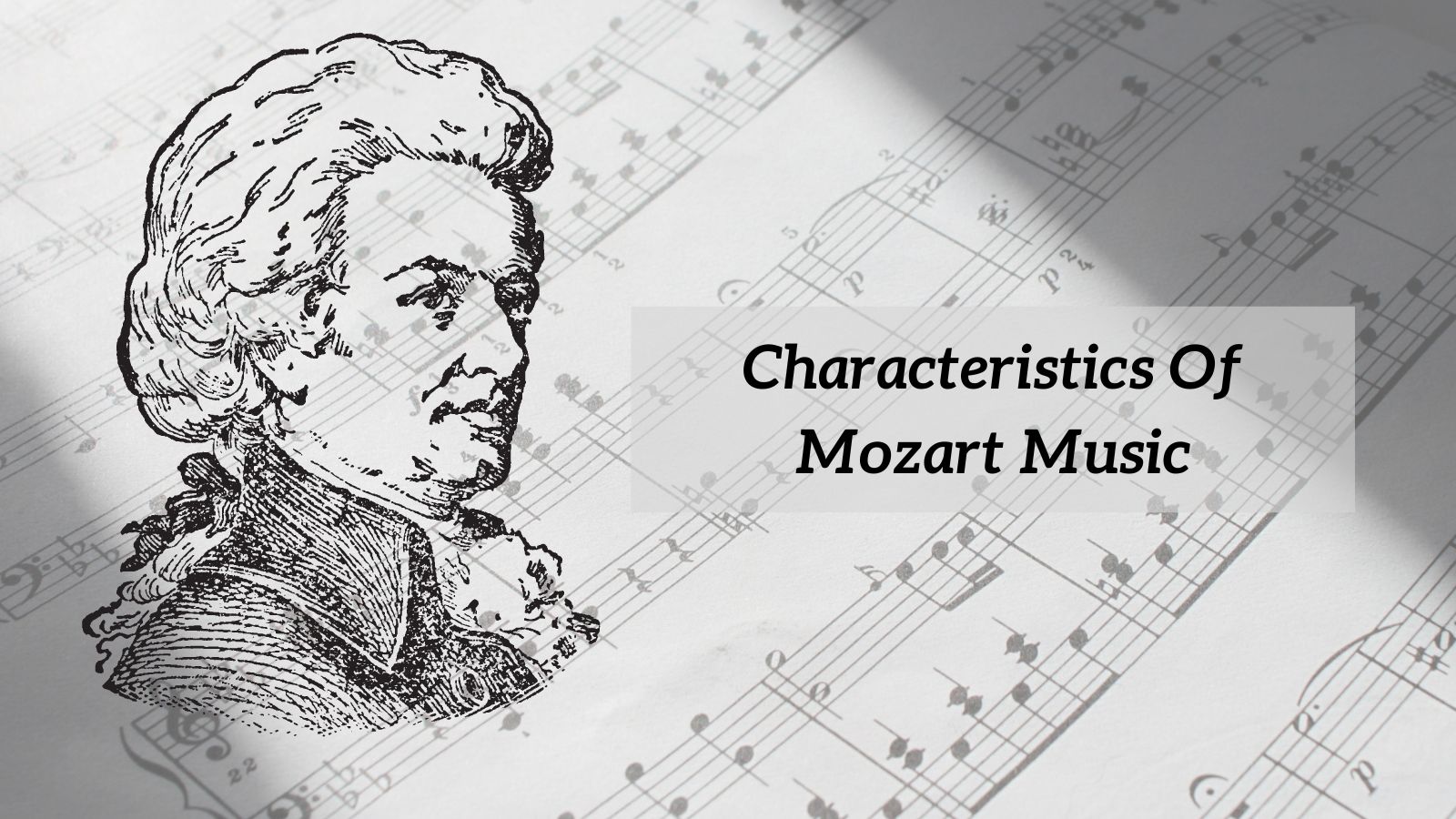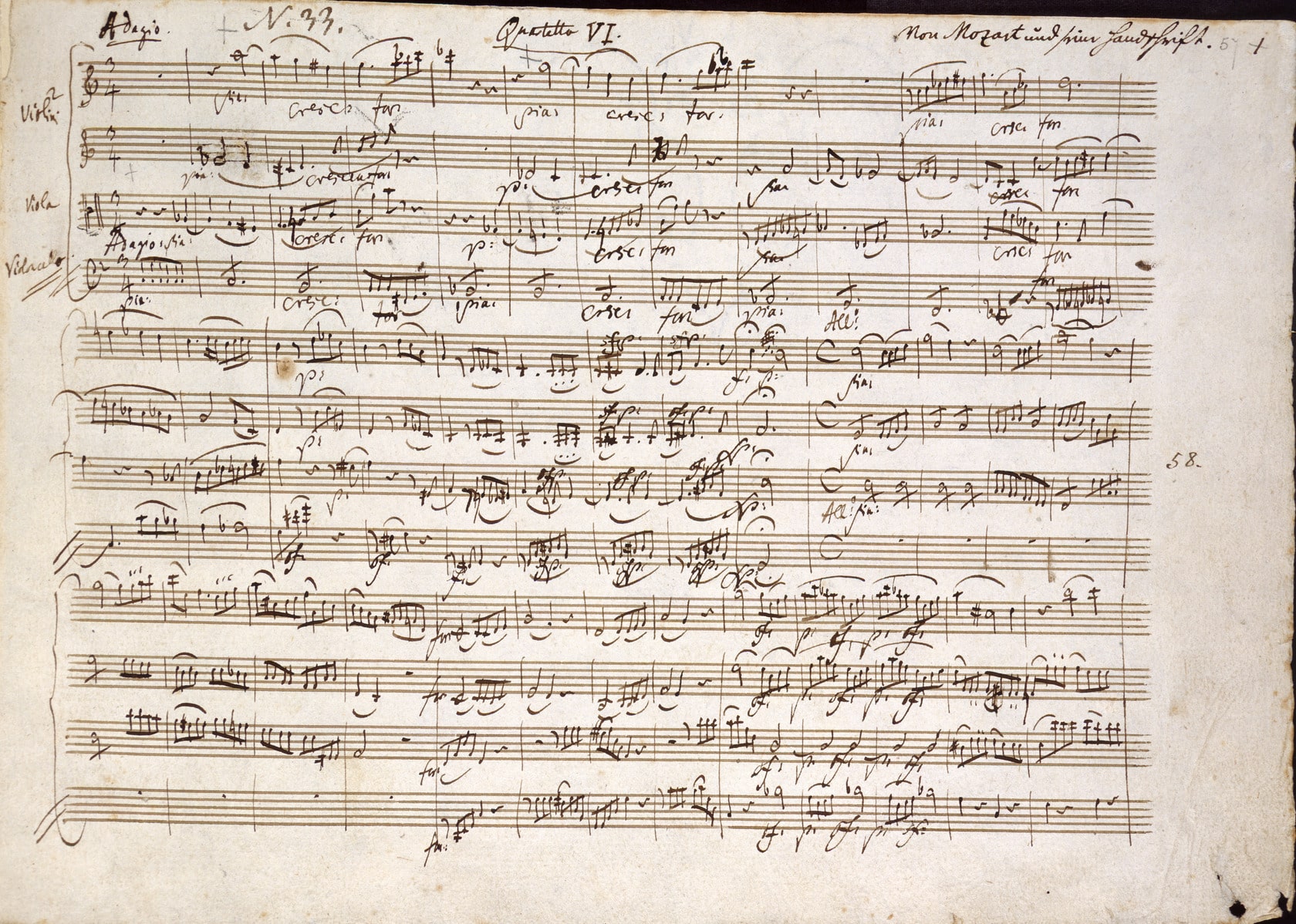
If you ask almost anyone to name a classical composer, they are highly likely to name Mozart. In part, this is because his music has become synonymous with the ideas of the Classical Era and the tragedy of his life, the subject of books, films and popular plays.
There is no doubt that WA Mozart was one of the most prolific composers of his day. His reputation for genius has remained intact for centuries.
It is well deserved as in WA Mozart’s music we find not only the iconic elements of the period but and perhaps, more importantly, quantum leaps forward in respect of harmonic, melodic and structural innovation.
Characteristics Of Mozart Music
WA Mozart composed over six-hundred works during his short time on earth. When you consider just how much he was able to write I find it almost impossible to conceive of how he could achieve such a phenomenal output.
Included in his catalogue are numerous concertos, operas, symphonies, sonatas, string quartets and a host of additional pieces.
If you listen to a selection of compositions from the early, mid and late periods, you will begin to acquire a richer appreciation of just how remarkable WA Mozart was.
From his Nthat were carefully guided by his father through to the magnificence of his final symphonic works, WA Mozart took the Classical ideals and ethos and transformed them with elegance and ingenuity that is hard to match.
What we hear in WA Mozart’s early works are in line with what you might expect from a composer in the first stages of his career. WA Mozart was a product of his time and his father.
It was Leopold that gave Wolfgang his musical instruction both as a composer and performer. He was thorough. If you examine the early keyboard works you can hear Classical traits in the music.
The phrasing is regular in four and eight-bar patterns; a dominance of tonic, dominant harmony and largely homophonic textures that are uncluttered and measured.
These characteristics are typical of this period of musical history and WA Mozart reflected this in his very early works. It is worth remembering too that some of these compositions stem from a WA Mozart that was not even ten years old.
There is a danger in simplifying the music of WA Mozart in these terms. Where his music becomes exceptional is not so much in the characteristics of the period as what he did with them.
Quite often it is easy to listen to WA Mozart’s music and be distracted by its apparent simplicity.
WA Mozart was well aware of this characteristic that enabled him to present the superficial, but actually, underneath the surface lie clever harmonic structures and intricacies that are easily missed.
In this way, WA Mozart could provide accessible music for general consumption by what was largely the nobility whilst continually challenging himself as a composer.
We hear the influence of JC Bach in the binary forms WA Mozart uses. In addition, WA Mozart’s extensive travels as a child brought a vast number of musical experiences to his young ears.
He would have not only heard JC Bach but the latest works from the courts of London, Paris, Mannheim and Vienna. From Opera Buffa (comic opera) through to the Italian Overture, each lodged its place in the incredible mind of the young composer from which he drew extensively for many works.
In some of the very early symphonies, WA Mozart mirrors the Italian Overture as movements dovetail into one another and the key relationships between movements close as they have the same key signature.
As WA Mozart forged ahead his music frequently looked back to the Baroque. Even though the clarity and balance of the Classical period were always present in his scores, Mozart never abandoned counterpoint.
In his later string quartets, you can hear fugues that are brilliantly worked into the movements and unless you’re listening carefully can go unnoticed. From 1774 the 29th Symphony in A major gracefully shows WA Mozart’s proficiency with counterpoint.
The opening Allegro moderato movement has a contrapuntal texture that is effortlessly crafted and brings a sense of restrained style to the work.
It is a bold four-movement work that demonstrates WA Mozart’s unfailing ability to compose to the occasion without compromising his musical integrity.
In the operatic world, WA Mozart excels. Here I always feel strongly that we hear the real WA Mozart as not only are there robust structures, intricate instrumental textures, experimental harmonies and immediately adorable melodies, but a certain freedom of expression that perhaps is not as apparent in other works.
It is certainly the case that the techniques WA Mozart wove into his opera facilitated development in his concertos and symphonies. This seems particularly true in terms of the sophisticated use of the orchestra.
It is interesting to realise that the Russian composer Tchaikovsky adored WA Mozart’s music. One quote attributed to the composer goes something like this: “That sunny genius whose music moves me to tears”.
In many ways, this encapsulates the WA Mozart we all admire. Many other composers contemporary to WA Mozart embody the Classical ideals from the Gallant Style onwards but few, if any, seem to have created music with the power that WA Mozart did.
When I write this, I am thinking of some of the very last pieces that WA Mozart wrote. These include his ‘Die Zauberflöte’, the Clarinet Concerto (K.622 in A Major), his final three symphonies and the Requiem Mass (K.626).
Each of these compositions displays WA Mozart’s exceptional abilities as a composer. The characteristics of the mature composer are in abundance here.
Through the total mastery of Classical forms, orchestration and crafting of melody WA Mozart never lose touch with his early influences.
Still, clarity and balance are present but WA Mozart takes perfectly measured risks with every increasing chromaticism that would pave the way for composers like Beethoven.
These works are primed with subtle detail, gentle nuance and exciting experiments. If WA Mozart had only lived another twenty or thirty years one can only wonder what astonishing achievements he would have made.


Thank you!